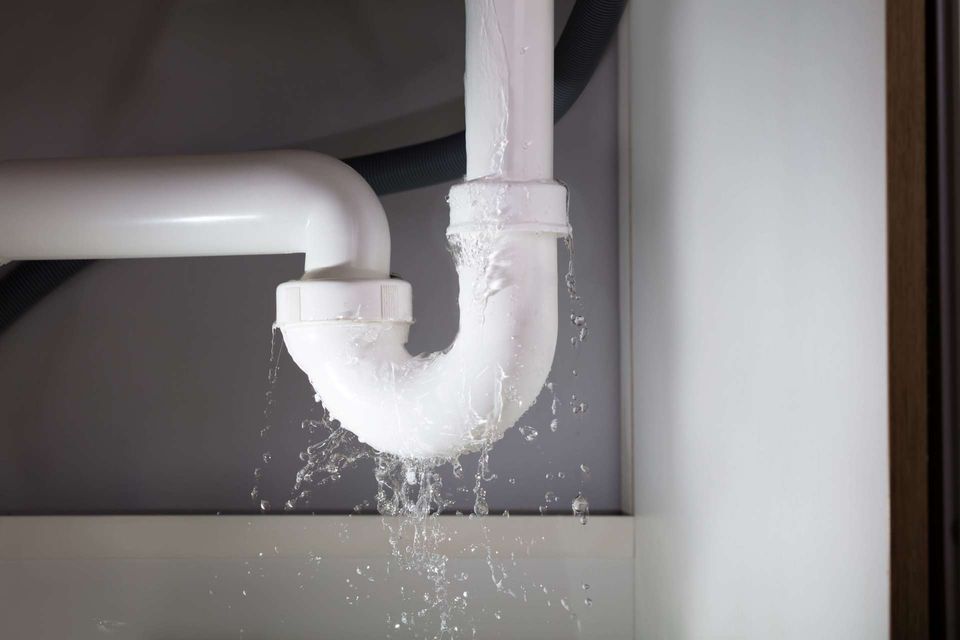We have stumbled on the article pertaining to Finding hidden leaks down the page on the internet and reckoned it made good sense to relate it with you on this page.

Early discovery of dripping water lines can minimize a possible catastrophe. Some tiny water leakages may not be noticeable.
1. Check Out the Water Meter
Every house has a water meter. Examining it is a proven manner in which helps you discover leakages. For beginners, shut off all the water resources. Make sure nobody will purge, utilize the faucet, shower, run the cleaning device or dishwashing machine. From there, go to the meter as well as watch if it will change. Since nobody is utilizing it, there need to be no activities. If it relocates, that shows a fast-moving leakage. Likewise, if you discover no changes, wait a hr or two and also inspect back once again. This indicates you may have a slow leak that might even be below ground.
2. Check Water Consumption
Examine your water costs and also track your water consumption. As the one paying it, you should discover if there are any disparities. If you spot sudden changes, regardless of your intake coinciding, it indicates that you have leaks in your plumbing system. Keep in mind, your water bill should fall under the very same range each month. An unexpected spike in your bill indicates a fast-moving leakage.
A stable increase every month, even with the exact same habits, reveals you have a sluggish leakage that's likewise slowly rising. Call a plumber to thoroughly examine your property, particularly if you really feel a cozy area on your flooring with piping beneath.
3. Do a Food Coloring Examination
When it comes to water consumption, 30% comes from commodes. If the color somehow infiltrates your dish throughout that time without flushing, there's a leakage between the tank and bowl.
4. Asses Outside Lines
Don't neglect to check your exterior water lines too. Test faucets by connecting a yard pipe. Ought to water permeate out of the connection, you have a loose rubber gasket. Change this as well as make certain all links are tight. It will certainly help obtain it professionally examined and kept annually if you have actually obtained a lawn sprinkler system. One small leakage can throw away lots of water as well as spike your water bill.
5. Analyze the scenario as well as inspect
Homeowners must make it a practice to examine under the sink counters as well as also inside cupboards for any kind of bad odor or mold development. These two warnings suggest a leak so prompt focus is needed. Doing regular assessments, even bi-annually, can conserve you from a significant problem.
If you recognize your house is currently old, maintain a careful eye on your heating units, hose pipes, pipelines etc. Check for stainings as well as damaging as the majority of pipelines and home appliances have a life span. They will likewise naturally degrade as a result of damage. Do not wait for it to escalate if you presume leaking water lines in your plumbing system. Call an expert plumber as soon as possible so you don't end up with a horrible mess in your house.
Early discovery of dripping water lines can reduce a prospective disaster. Some little water leakages may not be visible. Inspecting it is a proven way that helps you discover leaks. One small leakage can throw away tons of water and spike your water expense.
If you think leaking water lines in your plumbing system, don't wait for it to intensify.
WARNING SIGNS OF WATER LEAKAGE BEHIND THE WALL
PERSISTENT MUSTY ODORS
As water slowly drips from a leaky pipe inside the wall, flooring and sheetrock stay damp and develop an odor similar to wet cardboard. It generates a musty smell that can help you find hidden leaks.
MOLD IN UNUSUAL AREAS
Mold usually grows in wet areas like kitchens, baths and laundry rooms. If you spot the stuff on walls or baseboards in other rooms of the house, it’s a good indicator of undetected water leaks.
STAINS THAT GROW
When mold thrives around a leaky pipe, it sometimes takes hold on the inside surface of the affected wall. A growing stain on otherwise clean sheetrock is often your sign of a hidden plumbing problem.
PEELING OR BUBBLING WALLPAPER / PAINT
This clue is easy to miss in rooms that don’t get much use. When you see wallpaper separating along seams or paint bubbling or flaking off the wall, blame sheetrock that stays wet because of an undetected leak.
BUCKLED CEILINGS AND STAINED FLOORS
If ceilings or floors in bathrooms, kitchens or laundry areas develop structural problems, don’t rule out constant damp inside the walls. Wet sheetrock can affect adjacent framing, flooring and ceilings.
https://www.servicemasterbyzaba.com/blog/how-to-detect-water-leakage-in-walls/

As a keen reader about Locating water leaks, I assumed sharing that article was worthwhile. Are you aware of another individual who is interested by the topic? Feel free to promote it. I thank you for reading our article about Detecting hidden plumbing leaks.
Comments on “6 Ways to Locate Hidden Water Leakages in Your Residence”